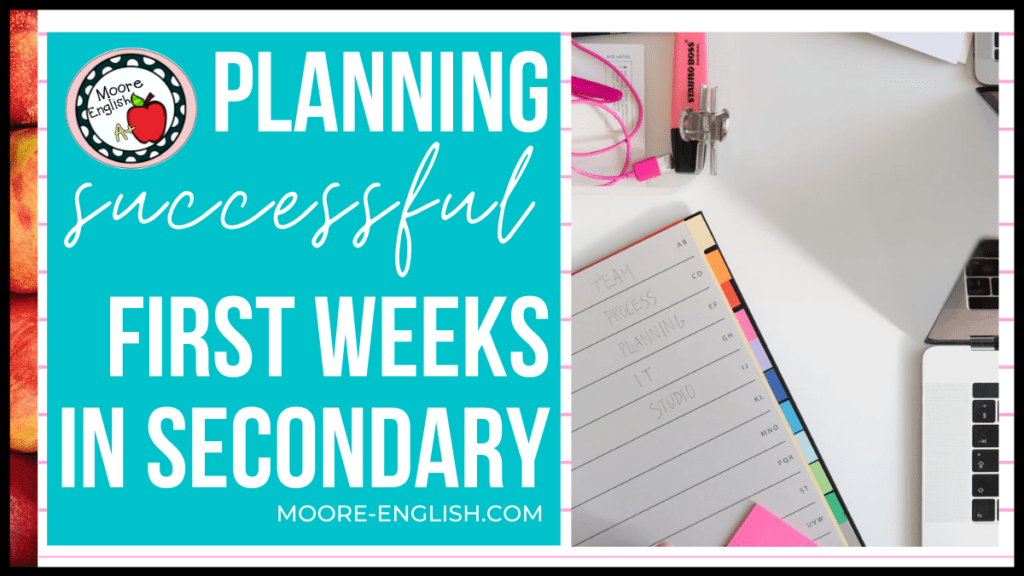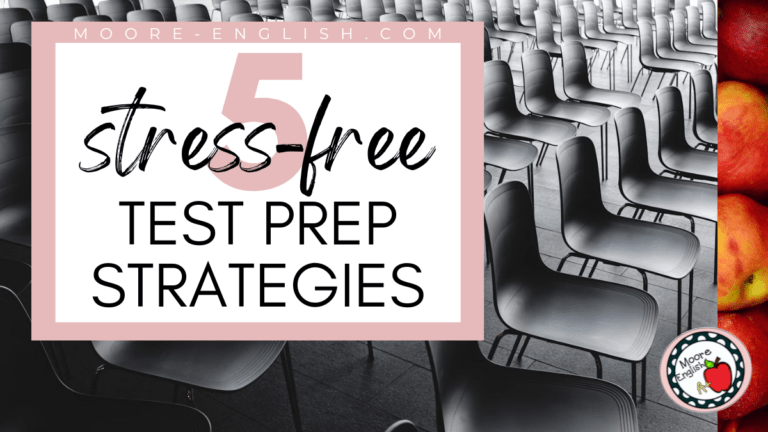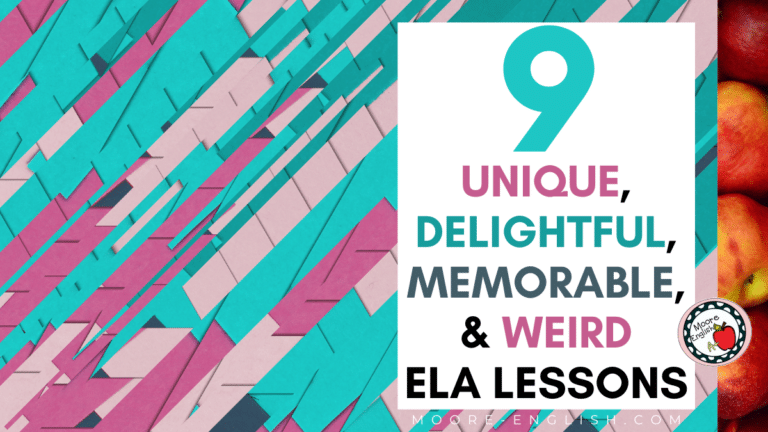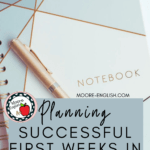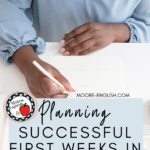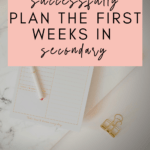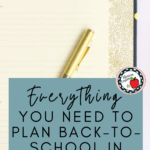This has been a week focused on #backtoschool: setting goals, designing my syllabus, and planning first-day of school activities. For me, school starts in about two weeks. So I have started planning my first few weeks of instruction.
I put a lot of emphasis on the first few weeks of the school year because this is when your students get to know the expectations of your classroom and your curriculum. During this time, be as consistent and intentional as possible. Be careful not to create false expectations. Here are my tips for the first few weeks:
This post this post may contain affiliate links. Please read the Terms of Use.
Planning Your Syllabus
Design your syllabus and decide how you are going to communicate your syllabus. My school requires teachers to communicate the syllabus on the first day and has specific requirements for each syllabus. So make sure you meet your building’s expectations.
Further, while the content of the syllabus is important, make sure you also know how you are going to share your syllabus. There’s nothing more painful than having a teacher read the syllabus to a room of teenagers. For the past few years, I’ve been using first-day stations. And one of my stations has been a Syllabus Scavenger Hunt. If that’s not your style, you could design a Syllabus Escape Room or a Syllabus BINGO board. Regardless, make sure to find some way to make presenting the syllabus meaningful.
Planning Relationships
Decide what personal information you’re willing to share. The first weeks are a critical part of building relationships. So decide what parts of your life you want to share with students. Consider the age and maturity of your students as well as the community in which you teach. Share information that makes you relatable but doesn’t undercut your authority. Try to communicate your passion for teaching and learning!
I often mention my dogs, the books I’m reading, baseball, and the graduate classes I’m taking. But I never mention romantic relationships, my age, or social media accounts. Further, if students ask you questions you are not comfortable with, you are not obligated to answer.
Greet students at the door and let them see you making an effort to learn their names. For the last several years, my district has emphasized the importance of greeting students at the door. And that little step makes a huge difference in how you get to know students. When you are at the door, you communicate to students that you are ready and excited to work with them. This sets an important tone that is welcoming but serious. This is a habit worth maintaining for the entire year!
Make a Plan for Organization
Pick your procedures. Before the first day of school, choose the procedures that you are going to emphasize in the first few weeks. Choose procedures that are essential to classroom function and that empower students to address their own needs. Avoid procedures with limited utility. For example, I make sure my students practice the turn-in procedure several times the first day and week. But I don’t teach our research and library procedures until much later.
Make seating charts. Seating charts are classroom management tools. Like procedures, seating charts allow you to create an environment that invites learning. Learning requires vulnerability and risk, so creating a classroom that feels safe is important. Part of safety is predictability. And seating charts (like procedures) can provide that sense of safety that empowers students to take academic risks like raising their hand, sharing their writing, or challenging a text.
Plan sponge activities. For the first several weeks, I over plan every lesson because I’m still getting to know my students and their strengths and needs. Some classes race through our parts of speech review while others take an extra week. For this reason, I put together several sponge activities at the beginning of the year. These are activities that require little prep but that we can use at the end of class if we have too much time to pack up but not enough time to start new material. Here are some sponge activities that work for middle and high school classes:
- Parallelism Game
- 180+ ELA Task Cards
- Adjective Catchphrase
- Grammar and Vocabulary Fun Bundle
- Commonly Confused Words Concentration
Start Ahead of Time. The first few weeks of school are essential to establishing and communicating classroom expectations. So make sure you start planning ahead of time. I spend more time planning my first day of school than I do most any other. Give yourself plenty of time to make a thoughtful start to the school year!
Start planning now to start the year on the right foot!
Here are some other posts and resources to get you ready for back-to-school!
- Back-to-School Bundle
- ELA Goal Setting Freebie
- Back-to-School Bucket List
- 4 Back-to-School One Pagers
- First Impressions Book Reviews
- High School Writing and Grammar Data Sheets
- Successfully Planning the First Three Days of School
- 3 Ways to Use Letter Writing in Secondary ELA (post here)

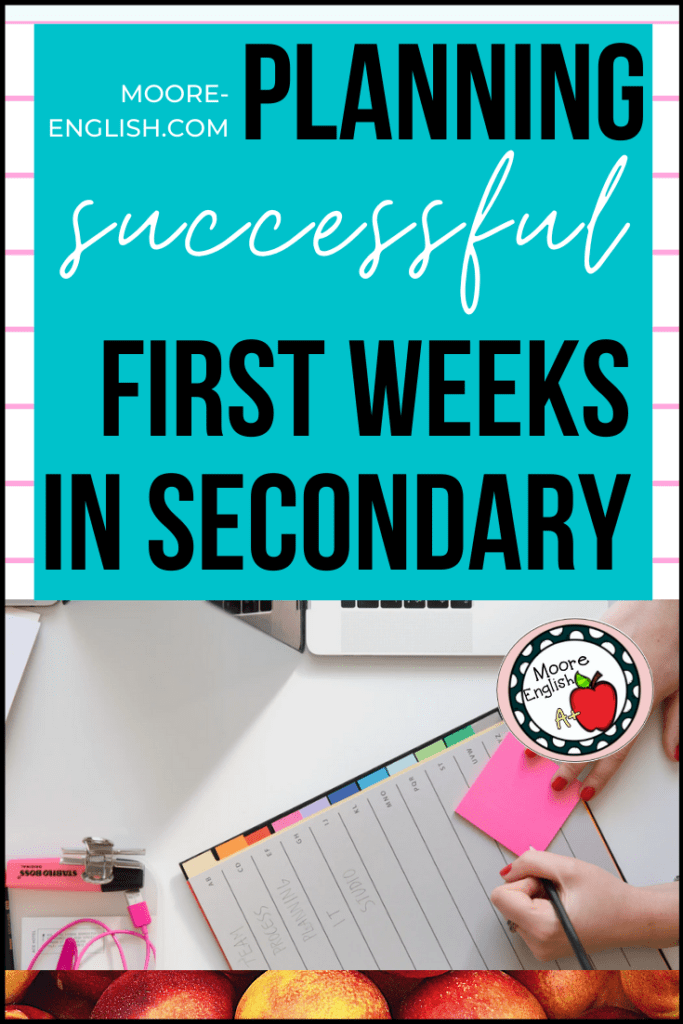
Photo by Marten Bjork on Unsplash, the Stock Boutique, Styled Stocked Society, Pixiestock, Ivory Mix

